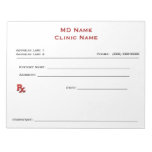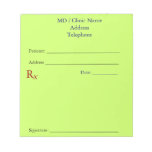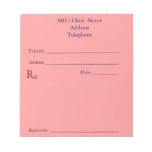At the root of this is the fact that an increasing amount of consumers don’t leave voicemails anymore. As Michael Shrage wrote in his 2013 piece in Harvard Business Review, It’s Time to Hang Up on Voicemail, “The issue is not whether I’m for or against voice mail, my view is that people want convenience, people want efficiency. They will migrate toward whatever tools and technologies in the workplace give them that.”
Riding on that trend, in June of 2015 Bloomberg reported that J.P. Morgan was abandoning its voicemail system for roughly 65% of its employees. Gordon Smith, head of the bank’s consumer and community bank division said, “We realized that hardly anyone uses voice mail anymore because we’re all carrying something in our pockets that’s going to get texts or e-mail or a phone call, so we started to cut those off.”
But what does this all mean for independent practices?
If less than 20% of all consumers or patients leave voicemails and you are using your voicemail system after hours to collect appointment requests from patients, then up to 80% of your callers are not identifiable for a callback the next business day.
Even using answering services can have a high percentage of patients saying, “Never mind, I’ll call back later.” The fact is, many never do.
So what’s the solution?
The good news is that there are simple, low cost solutions that allow your practice to rent a “Local DID.” A Local DID (Direct Inward Dial) is simply a local phone number that shares the same area code as your practice’s phone number, and which forwards any incoming calls to your regular phone number.
The benefit of doing this is that a Local DID can do what’s called a CNAM Lookup, essentially looking up the Caller ID of the person who called the number (even if the patient does not leave a voicemail). So while your practice in the past may have received five phone calls after hours and one or two voicemail messages, with the use of a Local DID that supports CNAM, your practice can get the names and phone numbers of all five callers, irrespective of whether they left a voicemail.
You will get a simple email for each caller, stating the name of the caller and the phone number from which they called your office. These types of services are numerous and extremely low cost while also being very easy to set up.
The benefit of doing this is that a Local DID can do what’s called a CNAM Lookup, essentially looking up the Caller ID of the person who called the number (even if the patient does not leave a voicemail). So while your practice in the past may have received five phone calls after hours and one or two voicemail messages, with the use of a Local DID that supports CNAM, your practice can get the names and phone numbers of all five callers, irrespective of whether they left a voicemail.
You will get a simple email for each caller, stating the name of the caller and the phone number from which they called your office. These types of services are numerous and extremely low cost while also being very easy to set up.
But wait, there’s more!
Because these Local DIDs are so affordable and seamless to set up, consider renting several at a time (each DID can be as low as $10 per month) and to use them in your local marketing campaigns.
For example, a practice may have four different marketing channels—Yellow Pages, Google, their website, and local radio. By renting four different DID numbers that all lead to the same phone number (your practice’s regular line) you can easily place each DID into one of each of the four different marketing channels.
As a result, it is very easy to see which marketing channels are producing the best results in terms of generating new patient phone calls and which ones are not. That is powerful business intelligence into the return on investment of your marketing dollars. Use this information to plan marketing campaigns designed to maximize your growth.




No comments:
Post a Comment